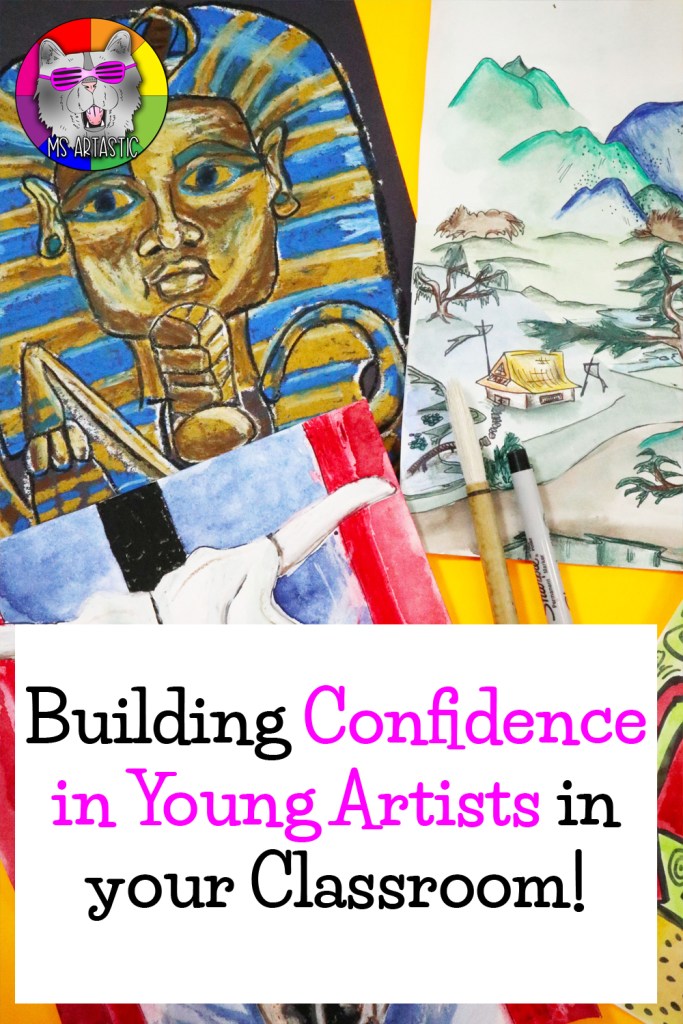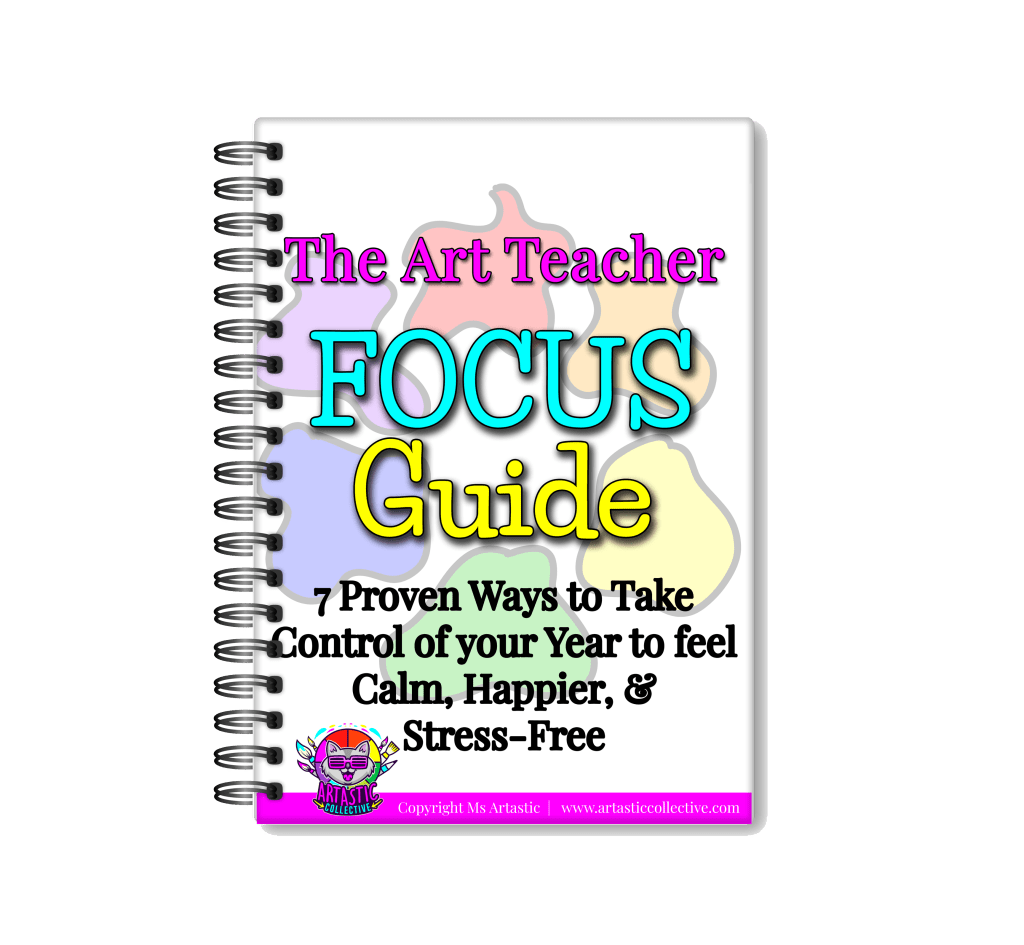
Building Confidence in Young Artists: Strategies for Encouraging Self-Expression
Unleash the creative genius in your young artists with our fun and positive strategies for building confidence and self-expression. Say goodbye to art class woes and hello to a supportive, uplifting studio environment. Let’s make every brushstroke a masterpiece!

Introduction
Hey there, Creative Champions!
I’m thrilled to embark on this colorful journey with you, as we dive into a subject that’s close to my heart: nurturing confidence and self-expression in young artists. Teaching art is a delightful adventure, but let’s face it, it does come with its fair share of challenges. From coaxing out those first brushstrokes to inspiring bold creative leaps, every day in the studio brings a new opportunity to ignite sparks of artistic brilliance.
I’m the one at the helm, guiding young minds towards discovering their unique creative voices. And let me tell you, it’s a role I cherish wholeheartedly. There’s something truly magical about witnessing a student’s eyes light up when they realize the endless possibilities that lie within their grasp.
In this journey, we’re not just painting, sculpting, or drawing. We’re building confidence. We’re creating an environment where every young artist feels safe to explore, take risks, and let their imagination run wild. Together, we’ll transform our studio into a space filled with positivity, support, and boundless potential.
So, let’s roll up our sleeves, grab those brushes, and embark on a creative adventure that promises not only beautiful works of art, but also a lifelong love for the creative process. Get ready to witness the blossoming of confident artists, one vibrant masterpiece at a time!
Creating a Supportive Studio Environment:
In my vibrant art studio, nurturing a sense of belonging and trust was as essential as choosing the perfect palette of colors. It was the canvas upon which young artists felt safe to explore, take risks, and let their creative spirits soar.
Picture this: laughter echoing off the walls, brushes dancing on canvases, and a palpable sense of camaraderie. That was the atmosphere I strived to cultivate. Whether it was through encouraging words, a high-five for a breakthrough moment, or just being there to lend an ear, every interaction in my studio was a brushstroke of positivity.
I learned that when students felt seen, heard, and valued, their confidence blossomed. They became eager to dive into new projects, unafraid to experiment and make mistakes. Together, we weren’t just creating art; we were forging a tight-knit community of budding artists, where each one knew they were part of something special.
And so, my studio became a sanctuary, where young creators could spread their wings and let their imaginations take flight. It was where they learned not just about art, but also about the power of support, encouragement, and the boundless potential that lies within each of them. Because in that vibrant space, we weren’t just painting. We were fostering a sense of belonging, where confidence grew, and creativity knew no bounds.

Tailoring Instruction to Individual Strengths and Interests
Back in my teaching days, I understood that no two young artists were alike. Each brought a unique set of strengths and interests to the canvas, and it was my joy to help them shine.
I made it a point to celebrate these differences, recognizing that some students had an affinity for bold, vibrant colors, while others were more drawn to intricate details and fine lines. By providing a range of projects and allowing them to choose those that resonated most, I ensured that every artist felt a sense of ownership over their creative journey.
Moreover, I encouraged students to explore their own styles, whether it was through experimenting with different mediums or embracing a particular artistic movement. This not only allowed them to play to their strengths but also empowered them to develop a strong sense of artistic identity.
By acknowledging and nurturing these individual strengths and interests, I witnessed an incredible transformation. Students who once hesitated to put brush to canvas now approached their art with confidence and enthusiasm. Their unique voices began to emerge, and their work flourished.
In tailoring instruction to their individuality, I wasn’t just teaching art; I was helping each young artist discover their own creative superpower. It was a journey of self-discovery that left an indelible mark on both them and me.
Embracing the Creative Process over Perfection:
In my teaching journey, one of the most valuable lessons I imparted to young artists was the idea that art isn’t about achieving perfection; it’s about embracing the journey of creation.
We celebrated the beauty of imperfection, understanding that every brushstroke, every smudge, and every unexpected splash of color was a testament to the artist’s unique expression. Mistakes weren’t met with erasers but with curiosity and a sense of adventure. We learned that it’s in those seemingly ‘imperfect’ moments that true artistic magic often happens.
This shift in focus from the end product to the process itself had a profound impact. It liberated students from the pressure of producing a flawless piece and encouraged them to take risks, to experiment, and to truly lose themselves in the act of creation.
We often took time to reflect on our progress, celebrating the breakthroughs and learning from the challenges. It was in these moments of reflection that students began to understand that the artistic journey was not about reaching a destination, but about the growth and transformation that happened along the way.
By embracing the creative process over perfection, I witnessed a newfound sense of freedom and confidence in my young artists. They approached their work with a sense of playfulness and a willingness to take artistic leaps of faith. And in doing so, they not only created beautiful art but also learned a valuable life lesson: that the journey itself is where the true beauty lies.

Incorporating Playful and Experimental Techniques:
During my time as a teacher, I held a firm belief that the art studio should be a sanctuary of exploration and boundless creativity. It was a space where rules took a back seat, and imagination took the wheel. We didn’t just create art; we embarked on a journey of discovery.
One of the ways I fostered this spirit of adventure was by introducing playful and experimental techniques. We dabbled in unconventional mediums, from using everyday objects as tools to exploring mixed media creations that blurred the boundaries between sculpture and painting. This encouraged my students to see the studio as a laboratory of artistic possibilities, where the only limit was their own imagination.
We embraced the unpredictable. Splatters, drips, and unexpected textures became our companions on this artistic adventure. We celebrated the “happy accidents” that often led to the most captivating and unique creations. It was through these playful experiments that my students learned the invaluable lesson that art isn’t just about precision—it’s about allowing oneself to be swept away by the flow of creativity.
In encouraging these bold forays into the unknown, I witnessed a remarkable transformation in my students’ artistic confidence. They approached their projects with a newfound sense of fearlessness, eager to see where their curiosity and creativity would lead them. These moments of unbridled experimentation weren’t just about creating art; they were about discovering the depths of their own artistic potential.
This approach not only enriched our artistic endeavors but also instilled in my students a broader lesson about the power of open-minded exploration. It taught them that true creativity knows no bounds and that sometimes, the most remarkable masterpieces emerge from the willingness to take risks and embrace the unexpected. In our studio, every day was an invitation to push the boundaries of artistic expression and revel in the joy of discovery.
Promoting Peer Support and Constructive Feedback
In my role as a teacher, I understood the immense value of creating a collaborative and supportive artistic community. It wasn’t just about individual growth; it was about fostering an environment where young artists could learn from one another and lift each other up.
To achieve this, I actively encouraged peer support and constructive feedback. We celebrated each other’s victories, big and small, and acknowledged the unique strengths that each student brought to the studio. This sense of camaraderie helped create a space where every artist felt valued and understood.
Group activities and collaborative projects were a cornerstone of our studio sessions. By working together towards a common artistic goal, students learned the power of teamwork and the magic that happens when creative minds come together. It wasn’t just about creating art; it was about creating bonds and memories that would last a lifetime.
In addition to peer support, I also guided my students in providing constructive critique. We learned how to offer feedback that was both honest and kind, focusing on specific elements of the artwork rather than making generalized judgments. This skill not only improved the quality of their work but also fostered a culture of continuous learning and growth.
Through these practices, my students learned that art is not a solitary endeavor, but a collaborative adventure. They discovered the power of encouragement and the joy of celebrating each other’s successes. And most importantly, they realized that by supporting one another, they could achieve artistic heights they never thought possible.
Promoting peer support and constructive feedback wasn’t just about creating better artists; it was about nurturing better human beings who understood the importance of kindness, empathy, and community in their artistic journey.
Conclusion
In my journey as a teacher, I’ve witnessed the transformative power of art in the lives of young creators. It’s been a privilege to guide them, not only in the technical aspects of artistic expression, but also in fostering confidence, self-discovery, and a deep appreciation for the creative process.
Through the years, we’ve turned the studio into a vibrant sanctuary of imagination and self-expression. We’ve celebrated the beauty of imperfection, embraced fearless experimentation, and learned the value of supporting one another.
As I reflect on this artistic odyssey, I’m filled with gratitude for the young artists who have graced my studio. Each brushstroke, each creative leap, and each moment of collaboration has left an indelible mark on both them and me.
To every young artist who dared to dream and create, and to every teacher who strives to nurture creativity, I salute you. Together, we’ve embarked on a journey of artistic discovery that will continue to inspire and resonate in the hearts of these budding creators.
May the spirit of creativity continue to flourish in every corner of the world, and may these young artists carry the torch of artistic passion forward, leaving a legacy of beauty, imagination, and self-expression.
With brushes held high and hearts full of gratitude, I bid farewell to this chapter, knowing that the creative flame we’ve ignited will forever burn bright. Thank you for being a part of this extraordinary journey.
The post Building Confidence in Young Artists: Strategies for Encouraging Self-Expression appeared first on Ms Artastic.
